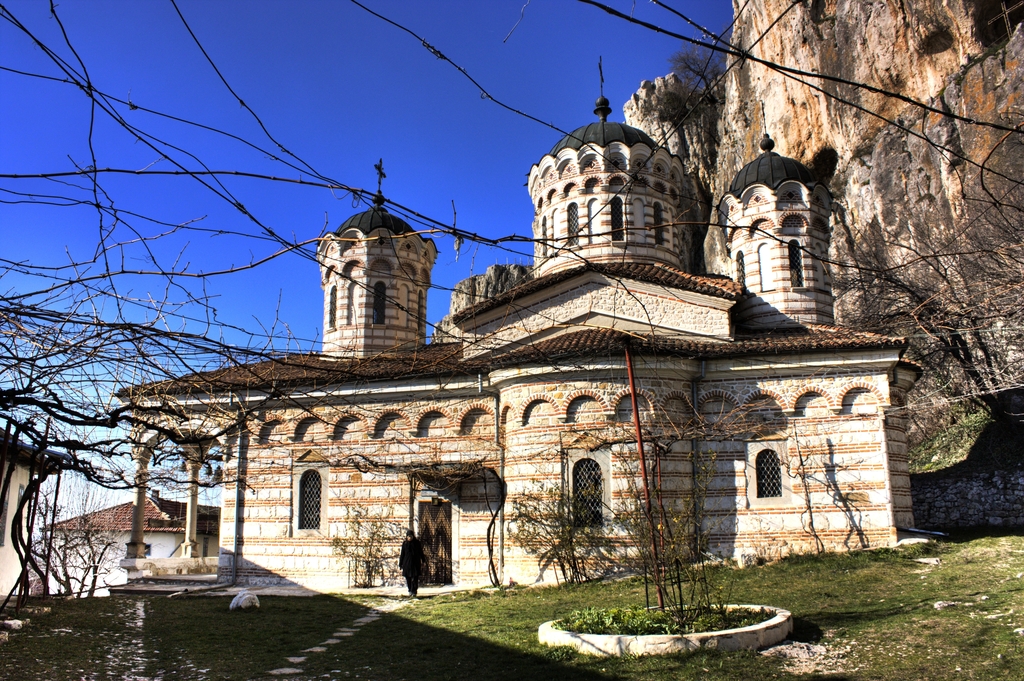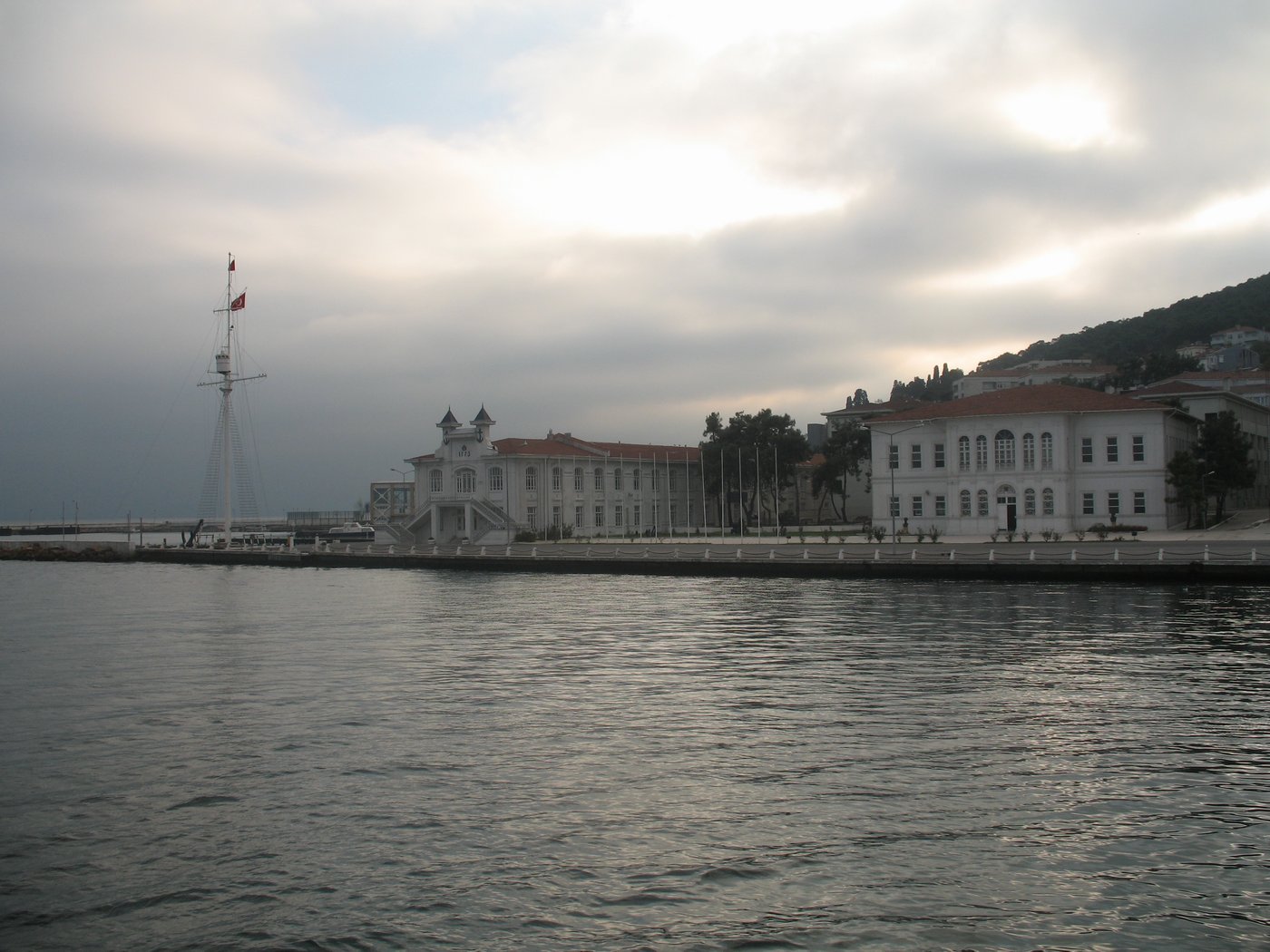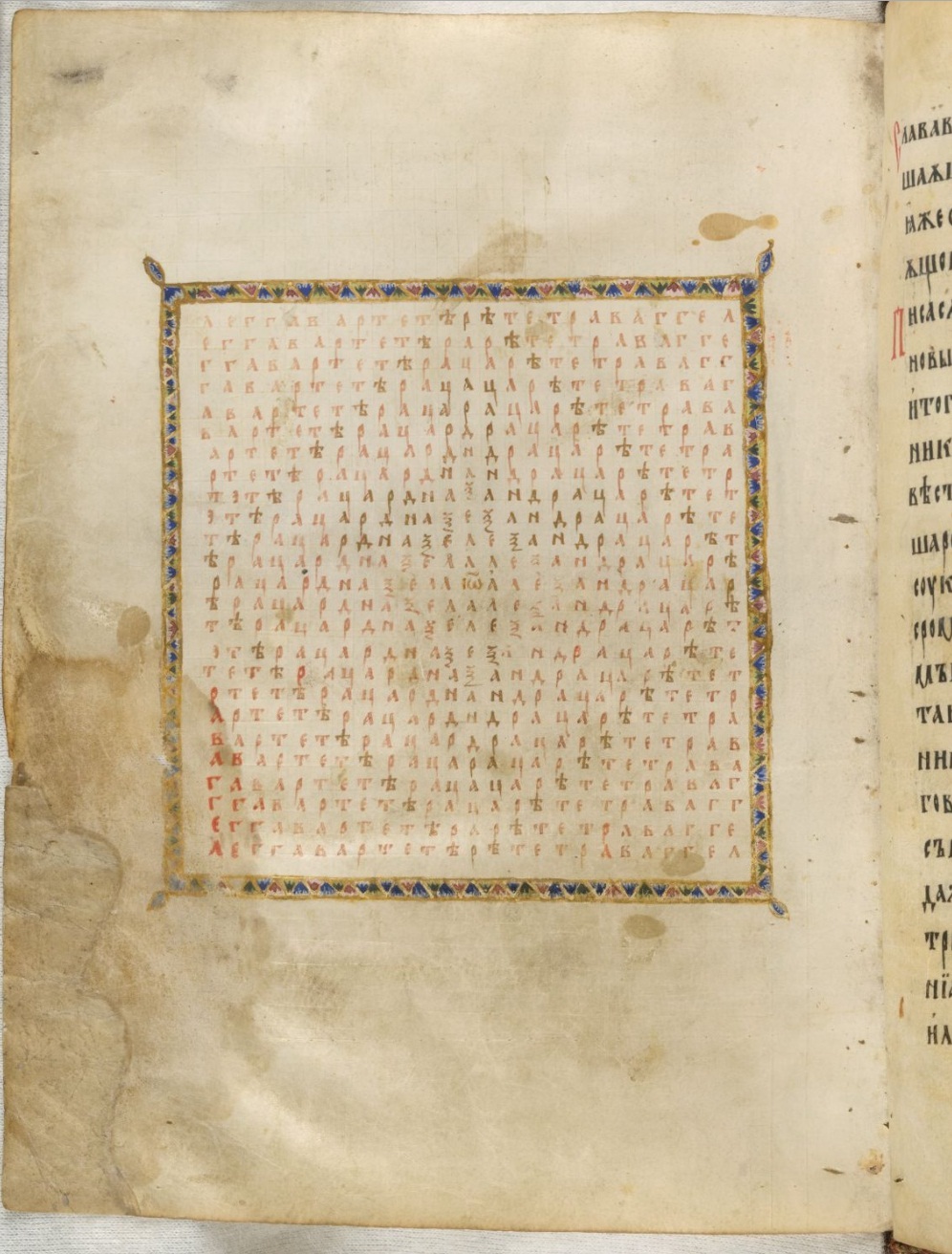|
Patriarchal Monastery Of The Holy Trinity
The Patriarchal Monastery of the Holy Trinity ( bg, Патриаршески манастир „Света Троица“, ''Patriarsheski manastir „Sveta Troitsa“'') is a Bulgarian Orthodox monastery in the vicinity of Veliko Tarnovo, north central Bulgaria. Founded in the Middle Ages, it was reconstructed in 1847 and again in the mid-20th century. Location and early history The Patriarchal Monastery is situated on the banks of the Yantra River within its Dervent Gorge. It lies some north of Veliko Tarnovo, the capital of the Second Bulgarian Empire from 1185 to 1393. On the opposite bank of the river is located another medieval cloister, the Transfiguration Monastery. Next to the Patriarchal Monastery stand the cliffs of the Arbanasi mountain, part of the foothills of the central Balkan Mountains. There are at least a few theories with regard to the monastery's exact foundation, all pointing to the Middle Ages. According to an inscription discovered during the construc ... [...More Info...] [...Related Items...] OR: [Wikipedia] [Google] [Baidu] |
Heybeliada
Heybeliada, or Heybeli Ada, is the second largest of the Prince' Islands in the Sea of Marmara, near Istanbull, Turkey. It is officially a neighbourhood of the Adalar district of Istanbul. Its name, meaning 'with a saddlebag' in Turkish, in supposed reference to the valley between two hills. The island was known as ''Halki'', ''Halkitis'' ( el, Χαλκίτις) and ''Demonesos'' ( Greek: Δημόνησος) in antiquity, the first two toponyms deriving from the Greek word ''halkos'' ( el, χαλκός), meaning copper. The island was famous for its copper and copper ores in antiquity. In winter the island's population is only about 5,500, but in summer, the owners of summer houses return and the population swells to approximately 30,000. Launched in 2008, TCG ''Heybeliada'', used by the Turkish Navy is named after the island. Until 2020, the only vehicles permitted on the island were ambulances, fire tenders, police cars etc; the only official form of transport was by ... [...More Info...] [...Related Items...] OR: [Wikipedia] [Google] [Baidu] |
Ivan Alexander Of Bulgaria
Ivan Alexander ( bg, Иван Александър, transliterated ''Ivan Aleksandǎr'', ; original spelling: ІѠАНЪ АЛЄѮАНдРЪ), also sometimes Anglicized as John Alexander, ruled as Emperor (''Tsar'') of Bulgaria from 1331 to 1371,Lalkov, ''Rulers of Bulgaria'', pp. 42–43. during the Second Bulgarian Empire. The date of his birth is unknown. He died on 17 February 1371. The long reign of Ivan Alexander is considered a transitional period in Bulgarian medieval history. Ivan Alexander began his rule by dealing with internal problems and external threats from Bulgaria's neighbours, the Byzantine Empire and Serbia, as well as leading his empire into a period of economic recovery and cultural and religious renaissance.''Bǎlgarite i Bǎlgarija'', 2.1 However, the emperor was later unable to cope with the mounting incursions of Ottoman forces, Hungarian invasions from the northwest and the Black Death. In an ill-fated attempt to combat these problems, he divided the c ... [...More Info...] [...Related Items...] OR: [Wikipedia] [Google] [Baidu] |
Danube
The Danube ( ; ) is a river that was once a long-standing frontier of the Roman Empire and today connects 10 European countries, running through their territories or being a border. Originating in Germany, the Danube flows southeast for , passing through or bordering Austria, Slovakia, Hungary, Croatia, Serbia, Romania, Bulgaria, Moldova, and Ukraine before draining into the Black Sea. Its drainage basin extends into nine more countries. The largest cities on the river are Vienna, Budapest, Belgrade and Bratislava, all of which are the capitals of their respective countries; the Danube passes through four capital cities, more than any other river in the world. Five more capital cities lie in the Danube's basin: Bucharest, Sofia, Zagreb, Ljubljana and Sarajevo. The fourth-largest city in its basin is Munich, the capital of Bavaria, standing on the Isar River. The Danube is the second-longest river in Europe, after the Volga in Russia. It flows through much of Central and Sou ... [...More Info...] [...Related Items...] OR: [Wikipedia] [Google] [Baidu] |
Romania
Romania ( ; ro, România ) is a country located at the crossroads of Central Europe, Central, Eastern Europe, Eastern, and Southeast Europe, Southeastern Europe. It borders Bulgaria to the south, Ukraine to the north, Hungary to the west, Serbia to the southwest, Moldova to the east, and the Black Sea to the southeast. It has a predominantly Temperate climate, temperate-continental climate, and an area of , with a population of around 19 million. Romania is the List of European countries by area, twelfth-largest country in Europe and the List of European Union member states by population, sixth-most populous member state of the European Union. Its capital and largest city is Bucharest, followed by Iași, Cluj-Napoca, Timișoara, Constanța, Craiova, Brașov, and Galați. The Danube, Europe's second-longest river, rises in Germany's Black Forest and flows in a southeasterly direction for , before emptying into Romania's Danube Delta. The Carpathian Mountains, which cross Roma ... [...More Info...] [...Related Items...] OR: [Wikipedia] [Google] [Baidu] |
Moldavia
Moldavia ( ro, Moldova, or , literally "The Country of Moldavia"; in Romanian Cyrillic: or ; chu, Землѧ Молдавскаѧ; el, Ἡγεμονία τῆς Μολδαβίας) is a historical region and former principality in Central and Eastern Europe, corresponding to the territory between the Eastern Carpathians and the Dniester River. An initially independent and later autonomous state, it existed from the 14th century to 1859, when it united with Wallachia () as the basis of the modern Romanian state; at various times, Moldavia included the regions of Bessarabia (with the Budjak), all of Bukovina and Hertsa. The region of Pokuttya was also part of it for a period of time. The western half of Moldavia is now part of Romania, the eastern side belongs to the Republic of Moldova, and the northern and southeastern parts are territories of Ukraine. Name and etymology The original and short-lived reference to the region was ''Bogdania'', after Bogdan I, the fo ... [...More Info...] [...Related Items...] OR: [Wikipedia] [Google] [Baidu] |
Wallachia
Wallachia or Walachia (; ro, Țara Românească, lit=The Romanian Land' or 'The Romanian Country, ; archaic: ', Romanian Cyrillic alphabet: ) is a historical and geographical region of Romania. It is situated north of the Lower Danube and south of the Southern Carpathians. Wallachia is traditionally divided into two sections, Muntenia (Greater Wallachia) and Oltenia (Lesser Wallachia). Dobruja could sometimes be considered a third section due to its proximity and Dobruja#Wallachian rule, brief rule over it. Wallachia as a whole is sometimes referred to as Muntenia through identification with the larger of the two traditional sections. Wallachia was founded as a principality in the early 14th century by Basarab I of Wallachia, Basarab I after a rebellion against Charles I of Hungary, although the first mention of the territory of Wallachia west of the river Olt River, Olt dates to a charter given to the voivode Seneslau in 1246 by Béla IV of Hungary. In 1417, Wallachia was fo ... [...More Info...] [...Related Items...] OR: [Wikipedia] [Google] [Baidu] |
Ecumenical Patriarchate Of Constantinople
The Ecumenical Patriarchate of Constantinople ( el, Οἰκουμενικὸν Πατριαρχεῖον Κωνσταντινουπόλεως, translit=Oikoumenikón Patriarkhíon Konstantinoupóleos, ; la, Patriarchatus Oecumenicus Constantinopolitanus; tr, Rum Ortodoks Patrikhanesi, İstanbul Ekümenik Patrikhanesi, "Roman Orthodox Patriarchate, Ecumenical Patriarchate") is one of the fifteen to seventeen autocephalous churches (or "jurisdictions") that together compose the Eastern Orthodox Church. It is headed by the Ecumenical Patriarch of Constantinople, currently Bartholomew, Archbishop of Constantinople. Because of its historical location as the capital of the former Eastern Roman (Byzantine) Empire and its role as the mother church of most modern Orthodox churches, Constantinople holds a special place of honor within Orthodoxy and serves as the seat for the Ecumenical Patriarch, who enjoys the status of '' primus inter pares'' (first among equals) among the world's E ... [...More Info...] [...Related Items...] OR: [Wikipedia] [Google] [Baidu] |
Ottoman Empire
The Ottoman Empire, * ; is an archaic version. The definite article forms and were synonymous * and el, Оθωμανική Αυτοκρατορία, Othōmanikē Avtokratoria, label=none * info page on book at Martin Luther University) // CITED: p. 36 (PDF p. 38/338) also known as the Turkish Empire, was an empire that controlled much of Southeast Europe, Western Asia, and Northern Africa between the 14th and early 20th centuries. It was founded at the end of the 13th century in northwestern Anatolia in the town of Söğüt (modern-day Bilecik Province) by the Turkoman tribal leader Osman I. After 1354, the Ottomans crossed into Europe and, with the conquest of the Balkans, the Ottoman beylik was transformed into a transcontinental empire. The Ottomans ended the Byzantine Empire with the conquest of Constantinople in 1453 by Mehmed the Conqueror. Under the reign of Suleiman the Magnificent, the Ottoman Empire marked the peak of its power and prosperity, as well a ... [...More Info...] [...Related Items...] OR: [Wikipedia] [Google] [Baidu] |
Siege Of Tarnovo
The siege of Tarnovo occurred in the spring of 1393 and resulted in a decisive Ottoman victory. With the fall of its capital, the Bulgarian Empire was reduced to a few fortresses along the Danube. Origins of the conflict Tarnovo exceeded all Bulgarian towns by its size, its treasures, and its partly natural, partly artificial fortifications. Therefore, the Turks attacked this area of Bulgaria first. The battle In the spring of 1393, Bayazid I gathered his troops from Asia Minor, crossed the Dardanelles, and joined with his western army, which likely included some Christian rulers from Macedonia. He entrusted the main command to his son Celebi, and ordered him to depart for Tarnovo. Suddenly, the town was besieged from all sides. The Turks threatened the citizens with fire and death if they did not surrender. The population resisted but eventually surrendered after a three-month siege, following an attack from the direction of Tsarevets, on July 17, 1393. The Patriarc ... [...More Info...] [...Related Items...] OR: [Wikipedia] [Google] [Baidu] |
Tomić Psalter
The Tomić Psalter ( bg, Томичов псалтир, ''Tomichov psaltir'') is a 14th-century Bulgarian illuminated psalter. Produced around 1360, during the reign of Tsar Ivan Alexander, it is regarded as one of the masterpieces of the Tarnovo literary and art school of the time. It contains 109 valuable miniatures. Discovered in 1901 in Macedonia by the Serbian research-worker and collector Simon Tomić, whose name it bears, it is exhibited in the State Historical Museum in Moscow, Russia. See also * Sofia Psalter, 1337 * Gospels of Tsar Ivan Alexander The Gospels of Tsar Ivan Alexander, Tetraevangelia of Ivan Alexander, or Four Gospels of Ivan Alexander ( bg, Четвероевангелие на (цар) Иван Александър, transliterated as ''Chetveroevangelie na (tsar) Ivan Aleks ..., 1355–1356 References * # * Axinia Dzurova, '' Tomic Psalter. Monumenta slavico-byzantina et mediaevalia europensia Vol I '', Kliment Ohridski University Press, Sofia ... [...More Info...] [...Related Items...] OR: [Wikipedia] [Google] [Baidu] |
Tetraevangelia Of Ivan Alexander
The Gospels of Tsar Ivan Alexander, Tetraevangelia of Ivan Alexander, or Four Gospels of Ivan Alexander ( bg, Четвероевангелие на (цар) Иван Александър, transliterated as ''Chetveroevangelie na (tsar) Ivan Aleksandar'') is an illuminated manuscript Gospel Book, written and illustrated in 1355–1356 for Tsar Ivan Alexander of the Second Bulgarian Empire. The manuscript is regarded as one of the most important manuscripts of medieval Bulgarian culture, and has been described as "the most celebrated work of art produced in Bulgaria before it fell to the Turks in 1393". The manuscript, now in the British Library (Add. MS 39627), contains the text of the Four Gospels illustrated with 366 miniatures and consists of 286 parchment folios, 33 by 24.3 cm in size, later paginated with pencil. The language of the text is variously described as Bulgarian, Middle Bulgarian, Slavonic, and Church Slavonic. Contents and binding The book contains the four Gos ... [...More Info...] [...Related Items...] OR: [Wikipedia] [Google] [Baidu] |
Tarnovo Literary School
The Tarnovo Literary School ( bg, Търновска книжовна школа) of the late 14th and 15th century was a major medieval Bulgarian cultural academy with important contribution to the Medieval Bulgarian literature established in the capital of Bulgaria Tarnovo. It was part of the Tarnovo School of Art which was characteristic for the culture of the Second Bulgarian Empire. With the orthographic reform of Saint Evtimiy of Tarnovo and prominent representatives such as Gregory Tsamblak or Constantine of Kostenets the school influenced Russian, Serbian, Wallachian and Moldavian medieval culture. It is well known in Russia as the second South Slavic influence. Origin and development The main prerequisite for the Tarnovo Literary School was the cultural revival of the late 14th century. It was largely due to the interest of Emperor Ivan Alexander (1331–1371) in literature and art and the traditions that he left to his sons and successors Ivan Shishman and Ivan St ... [...More Info...] [...Related Items...] OR: [Wikipedia] [Google] [Baidu] |







